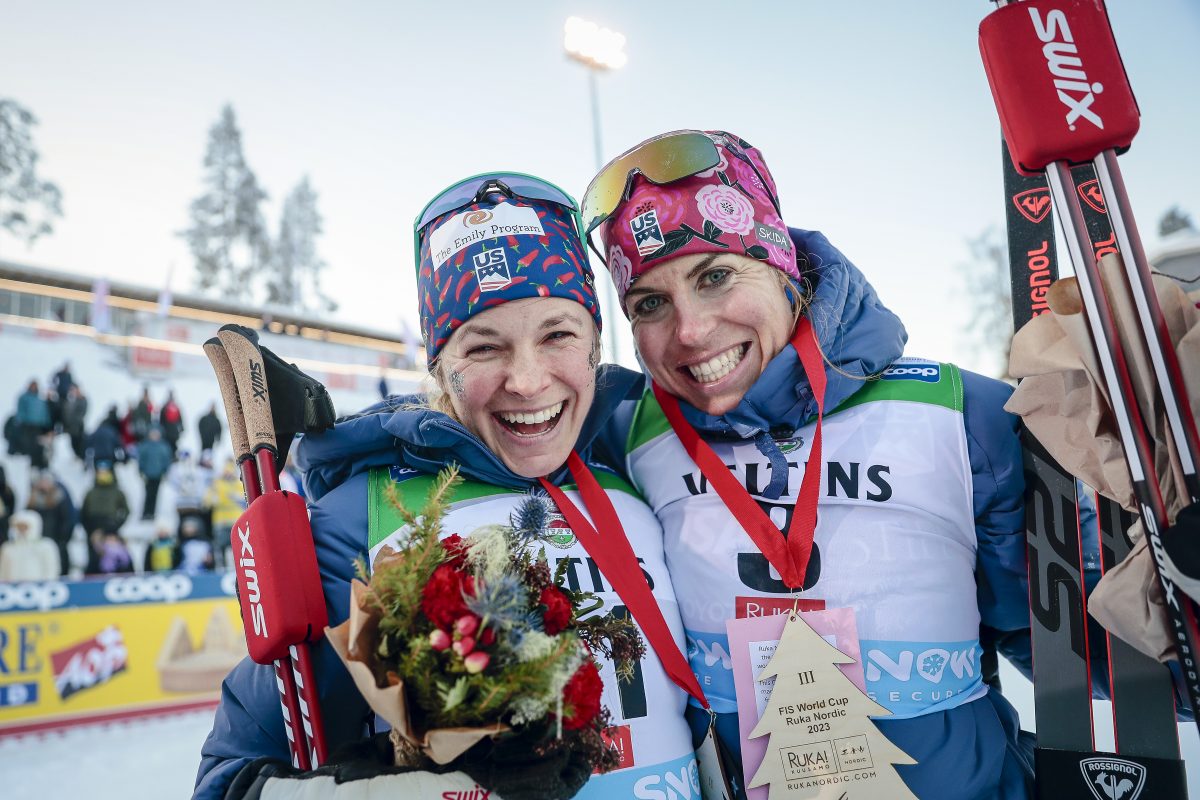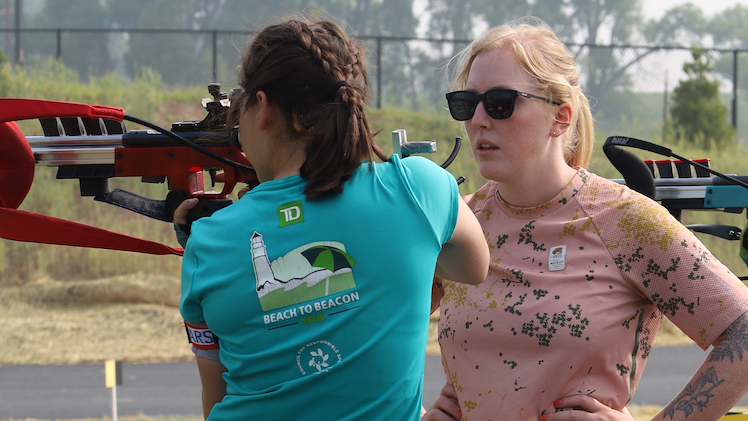
For the umpteenth weekend in a row, the U.S. Ski Team (USST) women turned in a set of firsts on the World Cup. In the 10 k classic mass start on Saturday in Rogla, Slovenia, Kikkan Randall led the way for the U.S. in 11th (+1:13.2), her highest career classic finish. Holly Brooks, Liz Stephen and Ida Sargent had their best-ever classic distance finishes with 19th, 22nd and 38th, respectively (Sargent tied her Kuusamo classic stage from earlier this season).
It seems at least one person on the women’s squad has made a major breakthrough every weekend on the World Cup so far.
“It’d be easy to stop one person who’s having a good season,” said USST Women’s head coach Matt Whitcomb of the momentum amongst his athletes. “But it’s much harder to stop a whole team.
“It is amazing to watch the dynamics of a team when its members begin to truly work together, for each other…It’s a team that really feels an elevated level of support from back home.”
The American performance on Saturday is all the more impressive when you consider that it was the most challening race of the year so far—Therese Johaug (NOR), in 2nd, called it the hardest she’d ever done. The going was tough, and the Americans rose to the occasion.
Despite their progress, even the women who made significant gains saw places to do even better. Randall fell prey to a surprise finishing attack from Krista Lahteenmaki (FIN), who edged the sprint leader by 0.2 seconds at the line—an uncharacteristic way for Randall to finish a race.
“I knew the Ukranian girl was coming in, but the Finn came out of nowhere,” said Randall. “I don’t know if she was in my draft, but I was like, ‘Aw, shoot.’”
Brooks had hoped for better than 19th—she wrote in an email that she felt “luke warm” about the race. At one point she was skiing in 10th, but before long, “fatigue set in like a load of bricks.”
The sloppy conditions and altitude may have had something to do with the exhaustion. Brooks also pointed to the extra effort head-to-head racing ekes out of racers.

“There were certainly more girls collapsed [at] the finish line than usual—a testament to the tricky conditions, altitude and the mass start format,” wrote Brooks.
The 2 km loop of mad-made snow was improved by 20 cm of fresh snow that fell Friday night, but the powder also presented its own challenges. The men went first on Saturday, making the tracks sloppy and washed out in places. The top of the course, where the intermediate sprints finished, featured a particularly nasty section.
“The snow was dirty, there were big chunks of ice and a strong headwind/cross wind to fight against,” said Brooks. “The skiing, in this section specifically, was ugly.”
Ugly snow to ski on, and ugly to be seen skiing on—but everyone suffered through the same conditions.
Stephen was positive about her race: “I’m really happy—by far this is my best distance classic race ever…my goal was definitely to be in the points,” she said.
Perhaps the best part of a strong result for Stephen was the confidence it brought on the final weekend of racing before the Tour de Ski.
“It feels good to get a good classic race in before going into the Tour,” she said. “I can’t think of anything more fun than doing nine races in 11 days.”

In 38th, Sargent tied her best classic race on the World Cup. She started far back in the chevron, wearing bib 49, and moved up near 20th in the first half. But she’s looking for more. In what seemed to be a theme for the day, she thought she might have gone out too hard and run out of gas.
Coming into the big downhill with a headwind, Sargent said she sometimes let gaps form between herself and those in front of her, and without the draft, was still working on the descent. The situation was unique to women’s racing, she said.
“Girls go for it in the beginning, guys kind of hang out in packs,” she said. On Saturday that was certainly true—the difference in finish times for the top 5 was 57 seconds. For the men, the spread was merely 2.2 seconds.
All four U.S. women are racing in the sprint tomorrow, where they’re hoping their momentum keeps carrying them through. Randall, Brooks and Sargent are all aiming to make the heats. Stephen would be thrilled with a top-30 too, but is realistic and would be excited with a top 40.
Audrey Mangan
Audrey Mangan (@audreymangan) is an Associate Editor at FasterSkier and lives in Colorado. She learned to love skiing at home in Western New York.




One comment
michael@high-alpine.com
December 18, 2011 at 10:21 am
I got to watch this race on Eurosport. Kikkan did a great job, actually moving up through the field through more than the first half of the race, racing in 5th and 6th for quite a while and looking strong. She just faded a bit towards the end. But dont forget, Marit started out only able to win sprints, then worked her way to longer distance performances. Patience to Kikkan, I am am sure she’ll get there. Merry Christmas!